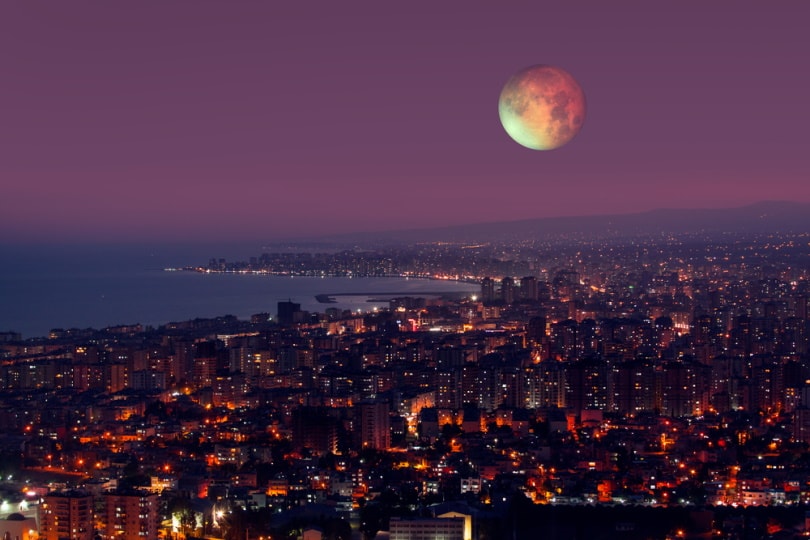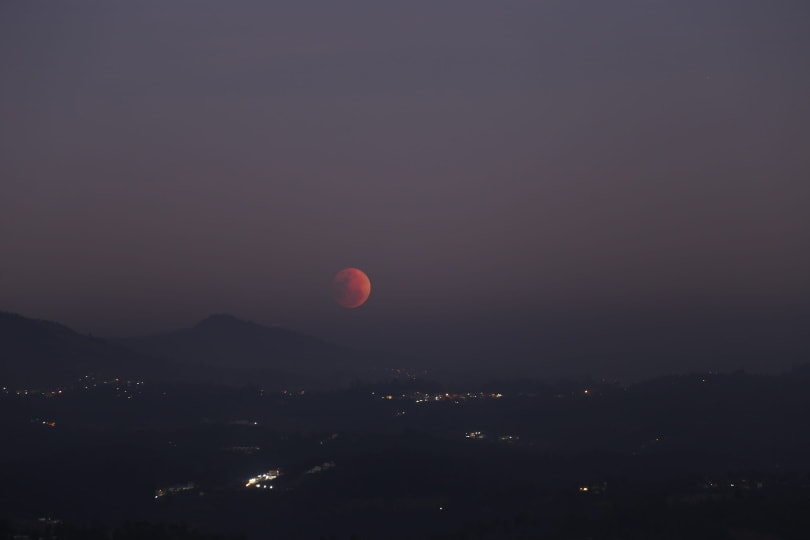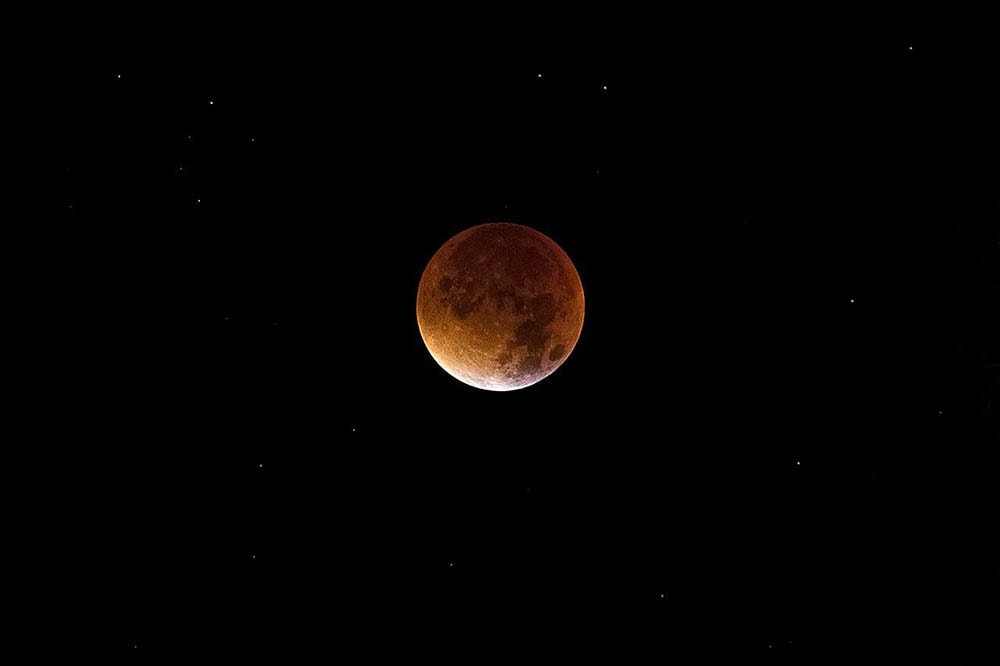What Is a Lunar Eclipse? Are They Rare?
Last Updated on

When the Sun, Earth, and Moon form a perfect line, in that order, the Earth blocks out light from the Sun to the Moon, and it creates a stunning visual effect called a lunar eclipse.
What else do you need to know about a lunar eclipse, and how can you spot one if you want to? We break down everything you need to know about this event here.

What Is a Lunar Eclipse?
A lunar eclipse is an event that occurs when the Earth, the Moon, and the Sun all line up in a particular way. Specifically, it’s when the Earth blocks out all or a portion of the light from the Sun from reaching the Moon.
This occurs when the Earth is directly between the Moon and the Sun, and it doesn’t happen as often as you might think!

What Is the Difference Between a Lunar Eclipse and a Solar Eclipse?
A lunar eclipse occurs when the Earth is in between the Sun and the Moon, and a solar eclipse occurs when the Moon is between the Sun and the Earth. It’s all about positioning, and while lunar and solar eclipses are similar events, the positioning for each to occur is completely different.
How Many Lunar Eclipses Are There in a Year?
Most years have two lunar eclipses. That said, some years will have three, while others will only have one.
While lunar eclipses are relatively rare, they’re visible to an entire hemisphere, so they often don’t get the same shock and awe response that solar eclipses generate.

What Is the Rarest Eclipse?
While some people think that solar eclipses are significantly rarer than lunar eclipses, that’s simply not the case. Lunar and solar eclipses occur at almost the same frequency.
The reason people think that solar eclipses are rarer is that they’re visible to a much smaller portion of the world when they occur.
While most people in an entire hemisphere can see a lunar eclipse when one occurs, a solar eclipse is only visible to a certain area.
Is It Okay to Look at a Lunar Eclipse?
Yes! Looking at a lunar eclipse is a completely safe thing to do. It’s no different than looking at the Moon on any other night.
This is completely different from looking at a solar eclipse, which is never safe unless it’s a total solar eclipse and you’re in complete totality, and even then, it’s risky.

Where Can You Go to See a Lunar Eclipse?
Since lunar eclipses are visible to an entire hemisphere when they occur, you don’t need to travel far to see one — you just need to know when to look up.
The location and date change with each eclipse, so it’s best to use a calendar with a map to let you know when and where to go.
How Many Types of Lunar Eclipses Are There?
While all lunar eclipses have the same basic principles, there are three different types to be aware of.
The first type is a total lunar eclipse. This occurs when the Earth completely blocks out the light from the Sun to the Moon. The Moon appears a rusty red color, so it’s often referred to as a blood moon.
A partial lunar eclipse occurs when the Earth only blocks out a portion of light from the Sun to the Moon. This happens when all three celestial bodies don’t form a straight line in space. The Moon will have a red tint, but it won’t cover the entire surface.
The third type of eclipse is the penumbral lunar eclipse. This occurs when the Earth’s shadow blocks some of the Sun’s light from reaching the Moon. The outermost part of Earth’s shadow is known as the penumbral, and that’s where this type of eclipse gets its name.


Final Thoughts
You might have to wait a while until the next lunar eclipse comes around, but go ahead and mark it on your calendar so you’ll be ready to see this amazing event!
Featured Image Credit: muratart, Shutterstock
Table of Contents
About the Author Robert Sparks
Robert’s obsession with all things optical started early in life, when his optician father would bring home prototypes for Robert to play with. Nowadays, Robert is dedicated to helping others find the right optics for their needs. His hobbies include astronomy, astrophysics, and model building. Originally from Newark, NJ, he resides in Santa Fe, New Mexico, where the nighttime skies are filled with glittering stars.
Related Articles:
Binocular Magnification Chart: Numbers & Distances Compared
What Is the Best Binocular Magnification for Hunting? Optical Features Explained
How to Clean a Refractor Telescope: Step-by-Step Guide
How to Clean a Telescope Eyepiece: Step-by-Step Guide
How to Clean a Rifle Scope: 8 Expert Tips
Monocular vs Telescope: Differences Explained (With Pictures)
What Is a Monocular Used For? 8 Common Functions
How to Clean a Telescope Mirror: 8 Expert Tips
